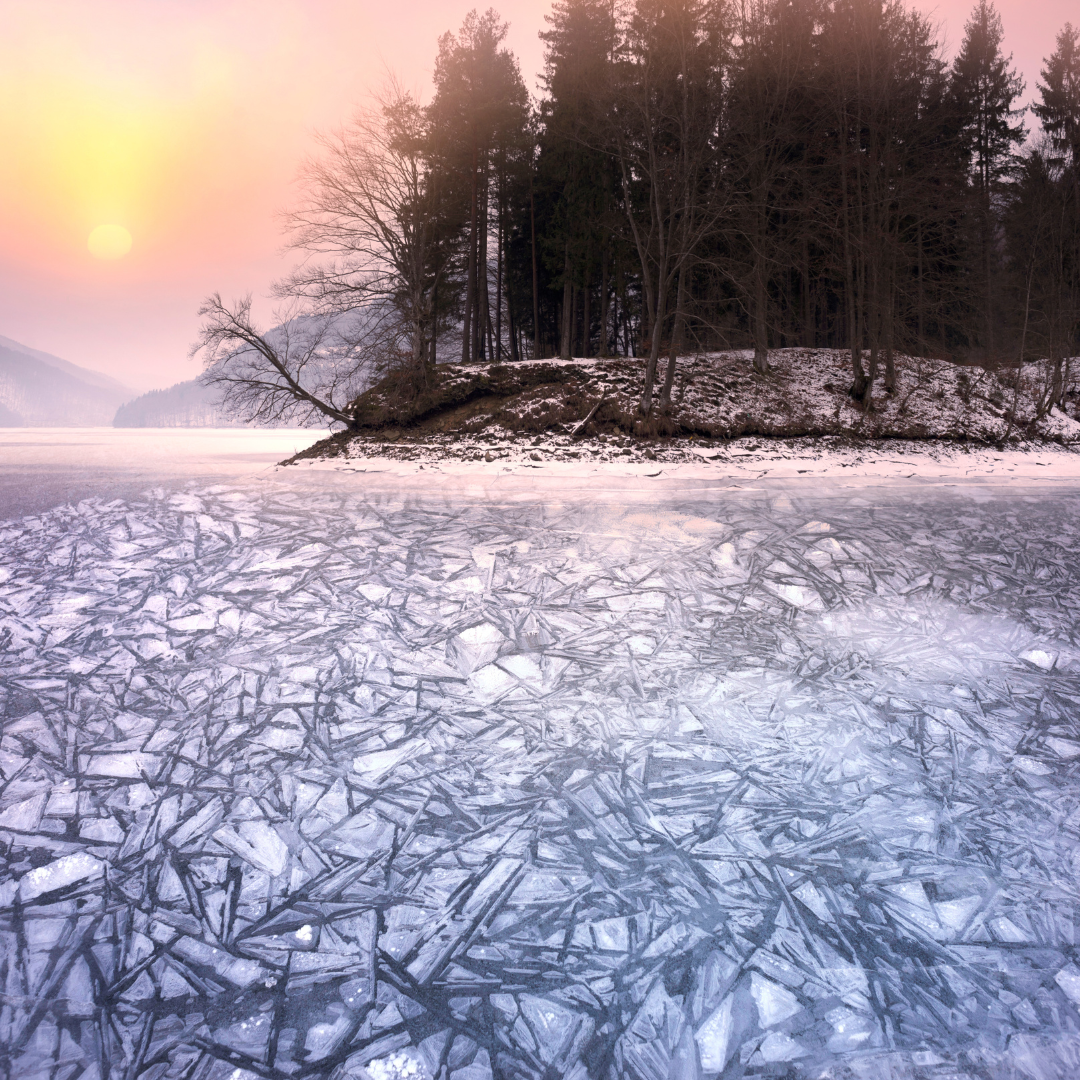Our alpine lakes are some of the most beautiful and popular attractions in the Sawtooth Mountains. Perhaps more so in summer, but some venture to the pristine lakes during the winter season. While they are a spectacular destination, it might surprise you to know what exactly is occurring on and below the lake this time of year.
Shifting temps
Long before winter arrives, warm water sits on top of colder, higher-density water in our alpine lakes. When the cooler weather begins, the upper layers become colder, breaking down that density difference. As the cold water begins its descent the warmer water is pushed back up toward the surface. The process will continue until the surface water becomes less dense and eventually freezes.
Because of the shifting of the thermal temps, the entire lake doesn’t become one solid mass of ice -which is critical for the life in the lake. Incredibly harsh winters can become a concern for some species as the oxygen levels can become too low if the lake stays frozen for too long.
Life below
Fish manage to survive the long cold Idaho winters because they are cold-blooded. Their body temperature basically matches that of their frigid water conditions. This also assists in slowing their bodily functions so they use as little energy as possible.
Other small, microscopic animals and amphibians use a strategy that allows them to go into a type of resting stage near the bottom of lakes.
Aquatic plants will die back, but their root systems will continue to store energy so they can begin producing new vegetation come spring.
Types of ice
Did you know there are different types of frozen lake ice? Black ice is crystal-clear, very strong, and forms first. White ice is weaker and forms upward from black ice. When cracks occur in the black ice, water seeps upward creating a puddle of slush, resulting in white ice once it refreezes.
Enjoying our beautiful Idaho lakes
While they are an incredible place to visit, there is a precise science when it comes to testing the safety of lake ice for recreation purposes. Ice is never 100% safe, and extreme caution should always be taken. Never go on ice alone and always let someone know when you are visiting alpine lakes in the winter.




